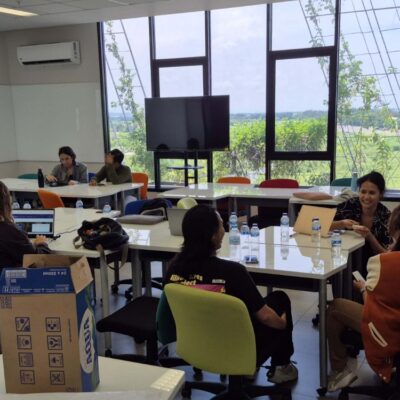
The clear message of ‘Powering Up: Unleashing the Clean Energy Supply Chain’ is that clean energy is at the heart of the solution to climate change. The increasing global population and technological advancements have fueled massive and growing energy demand. Fossil fuels meet this demand, but without a shift to sustainable energy sources such as solar, wind and ocean energy, greenhouse gas emissions will only escalate, leading to severe environmental and economic consequences which are already being felt. Recognising these risks, nations worldwide are undertaking various strategies to mitigate them and governments are reassessing their energy policies, emphasising the transition to renewable energy sources.
Alan Finkel, former Australian Chief Scientist and Special Advisor to the Australian Government on Low Emissions Technology, provides a comprehensive overview of the clean energy transition landscape in Australia in his book.
Finkel initiates the discussion on the transition to renewable and clean energy by arguing that mining on a massive scale will be needed to extract the materials required for zero-carbon energy sources, which have the potential to eliminate nearly three-quarters of greenhouse gas emissions worldwide. Minerals are needed for solar batteries and solar panels; giant factories are required to build the parts for towering wind turbines; and untold miles of high-voltage transmission lines are needed to carry the electricity to power the mines and factories.
Australia is a fortunate country with abundant mineral and fossil-fuel resources that are in international demand, but the nature of that international demand has already started to change and will be almost unrecognisable three decades from now. Fortunately for Australia, Finkel argues in Chapter Two, it also has plentiful energy transition materials such as lithium, nickel, cobalt, aluminum, copper, and rare earths. It is also well placed to become a major producer of hydrogen for domestic use and export. To capture the opportunities for the use of hydrogen as an energy carrier and as a critically important input to decarbonised export products, the Australian federal government is undertaking a review of its national hydrogen strategy, aiming to become a ‘global hydrogen leader’ by 2030. Australia has already taken a leading role, Finkel argues, in developing a hydrogen certification scheme that can ultimately be expanded to cover ammonia and decarbonised iron and aluminum.
Finkel does not regard, at least at the moment, a transition to nuclear power as a viable option for Australia, particularly due to the challenges relating to timing and community acceptance. He also highlights the legislated block on nuclear power dating back to 1998. If an Australian government was committed to developing a nuclear power energy transition, he argues, it could not materialise within 20 years due to a lack of supporting legislation and regulatory systems; the time needed to build plants and identify processes and sites for storing nuclear waste; as well as delays caused by likely significant legal challenges.
The book also accentuates the need for a system of international trade of renewable energy (ideally by ship), since some countries are blessed with abundant renewable energy resources but others will not be able to meet their requirements. The most practical way to transport energy by ship is to convert it into hydrogen or a chemical derivative such as ammonia or to embed hydrogen in finished products such as steel and fertilisers. Finkel notes that shipping supply chains cannot be shut down as easily as pipelines, such as the gas pipeline from Russia to Europe;, an observation which is a welcome addition to policy debates usually focused on economic benefits, innovations, and technologies without much consideration of the security implications.
Finkel also argues that the clean energy transition is also an opportunity to improve ‘energy equity’ which he defines as the ‘provision of energy at a reasonable cost, without local pollution, to ensure that all members of society can meet their basic needs for cooking, heating and transportation’. Within advanced economies, poorer communities tend to be burdened with disproportionate energy costs, such as a lack of access to the benefits of home solar panels, solar batteries, energy-efficient housing, and public transport. An equitable energy system is essential to ensure that the economic, health, and social benefits of affordable energy extends to all levels of society.
Each country’s approach plays a pivotal role in reducing the Earth’s temperature as well as towards a stable and sustainable climate at a global level. Finkel states that an economy-wide price on carbon dioxide emissions (a carbon tax or an emission trading scheme) is the most efficient way to stimulate the shift to net zero emissions. Based on the 2023 report by Emissions Database for Global Atmospheric Research, China, the United States, India, the EU27, Russia, and Brazil were the six largest GHG emitters in 2022, accounting for 63.4 percent of global fossil fuel consumption and 61.6 percent of global GHG emissions. Sweden, Norway, and Denmark have topped the latest Energy Transition Index, and Sweden had the highest carbon tax in the world at €122 per ton in 2023.
‘Powering Up’ is a timely guide for policymakers to effectively plan and respond to the existing and upcoming climate challenges. Finkel strongly makes the case that the Australian government must vigorously pursue its legislated commitment to 82 percent renewable electricity by 2030.
Image: Wind turbines. Photo by Thắng-Nhật Trần/Pexels.




